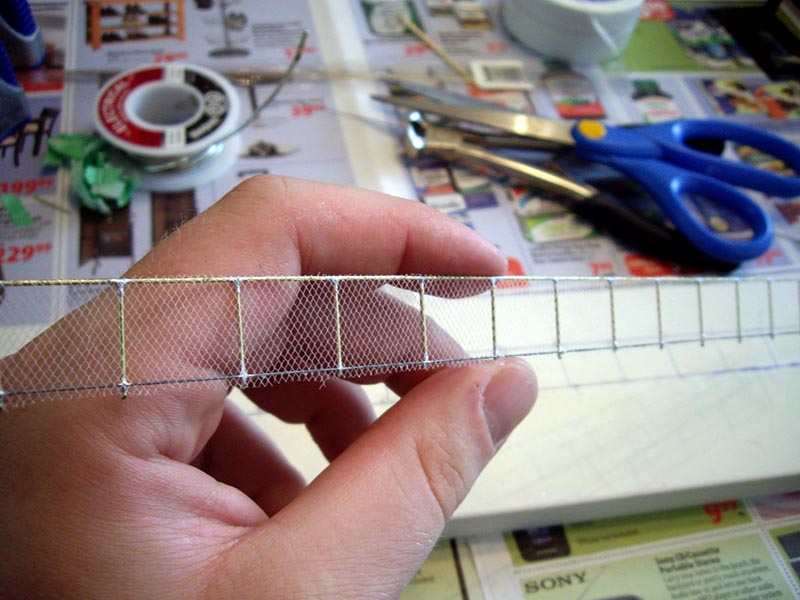Tyler Bjarnason/photos by the author
Finding HO scale chain link fences in my area was proving to be difficult, so I turned to the Internet to see if I could make my own. After finding several helpful articles, I made my own simple fences using brass rods and tulle (pronounced “tool”) lace I purchased at a local fabric store. While my model is HO (1:87), you could adapt this method for any scale you choose.
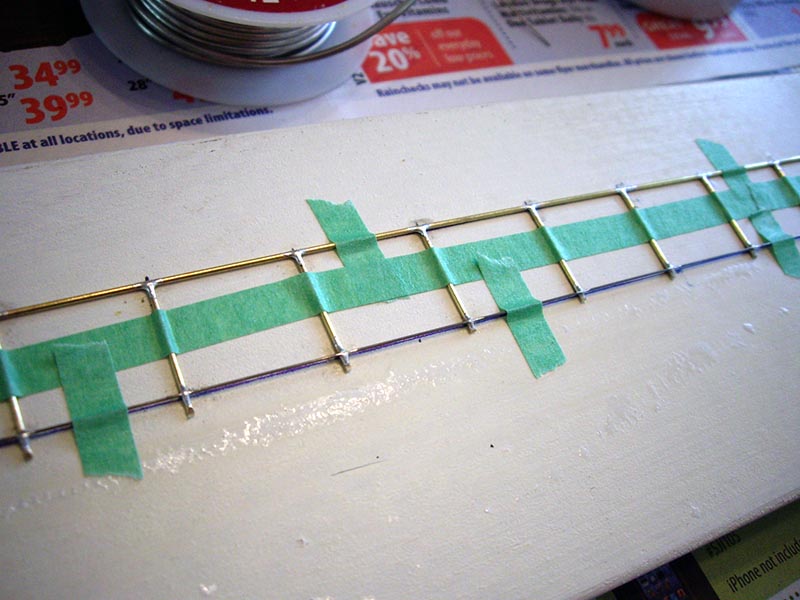 I started by drawing a scale 6-foot tall chain link fence template on a small scrap piece of wood. I then cut .81mm brass rod into the required lengths of each fence post, and taped them directly over the template with masking tape. A full 12” brass rod was used as the main rail along the top, and a 12” length of music wire was used as the bottom support rail.
I started by drawing a scale 6-foot tall chain link fence template on a small scrap piece of wood. I then cut .81mm brass rod into the required lengths of each fence post, and taped them directly over the template with masking tape. A full 12” brass rod was used as the main rail along the top, and a 12” length of music wire was used as the bottom support rail.
I used my soldering iron to carefully solder the support rails to the posts. A bit of sanding might be required after making the solder joints, as the process can leave a large, unrealistic joint if you use too much solder.
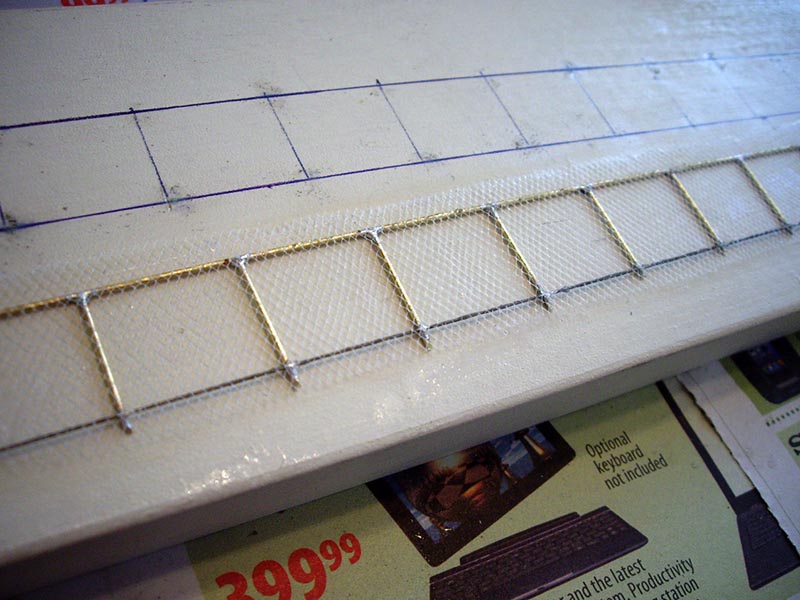
The next step was to lay the tulle over the backside of the fence’s frame. I found that superglue worked the best to attach the tulle material to the brass rod. Once the glue had fully dried, I used flat-head trimmers to gently trim the excess material from the frame.
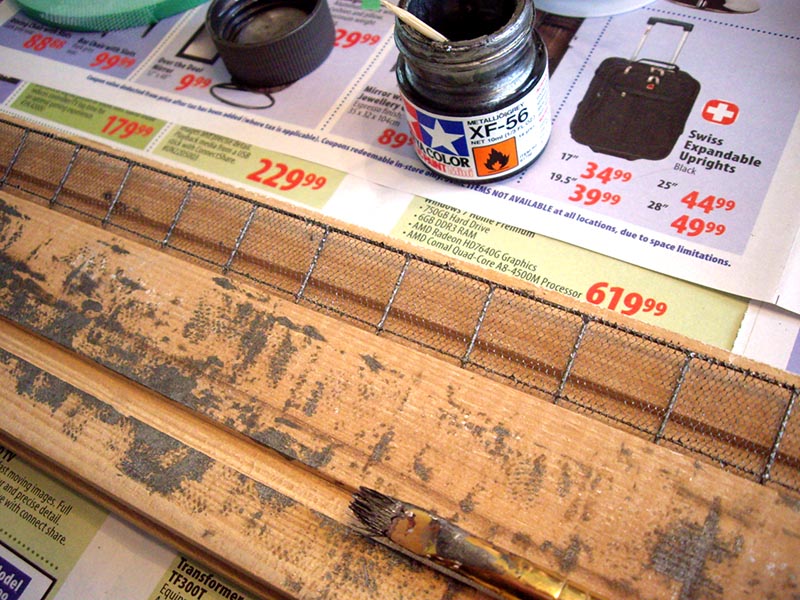
Painting the fence was next. For this, I used Tamiya metallic gray acrylic paint, ensuring all of the brass rod and tulle material was fully coated. Depending on the condition of your fence, you may want to consider adding some brown and orange rust effects. Fences can also be painted dark green or black to simulate heavier chain line fences.
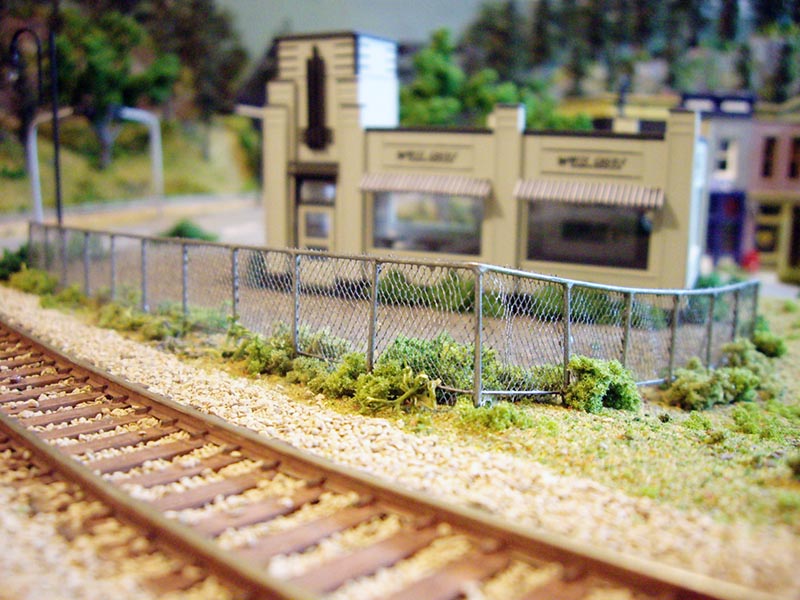
After bending the fence to the appropriate angle, I used super glue to fasten it to my layout. I had a little trouble with this particular installation as the terrain wasn’t level, so I had to bend the fence on its horizontal access, which caused the tulle material to bind in some spots. Many of the small defects in the tulle (that were caused from bending the fence), were easily covered and hidden with shrubs that I added after installing the fence.
Tyler Bjarnason resides in Lethbridge, Alberta, Canada, and is the author of “Ty’s Model Railroad,” an active construction blog detailing the progress on his freelanced 4×8 HO scale model railroad.


